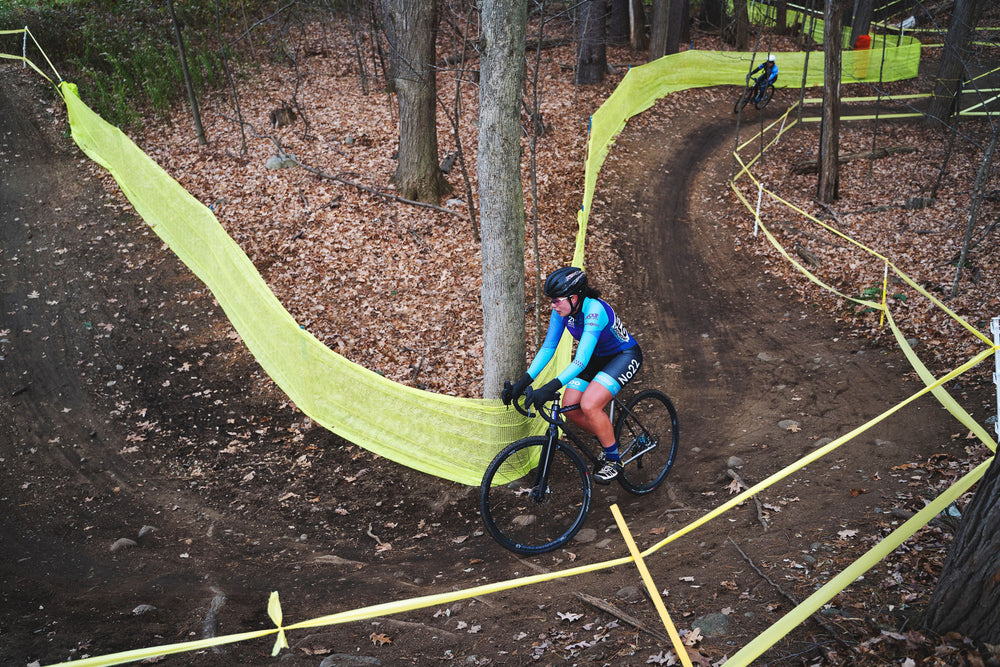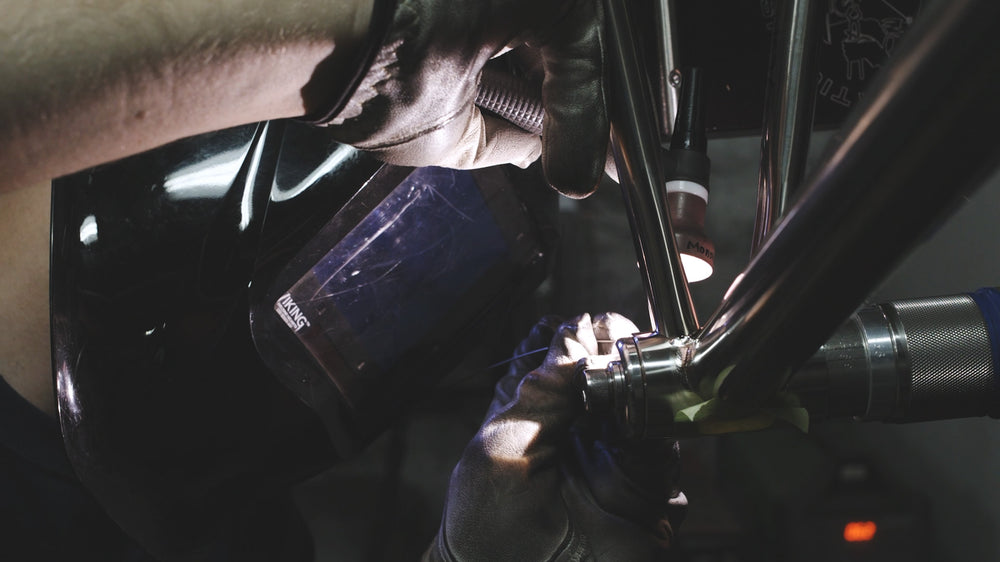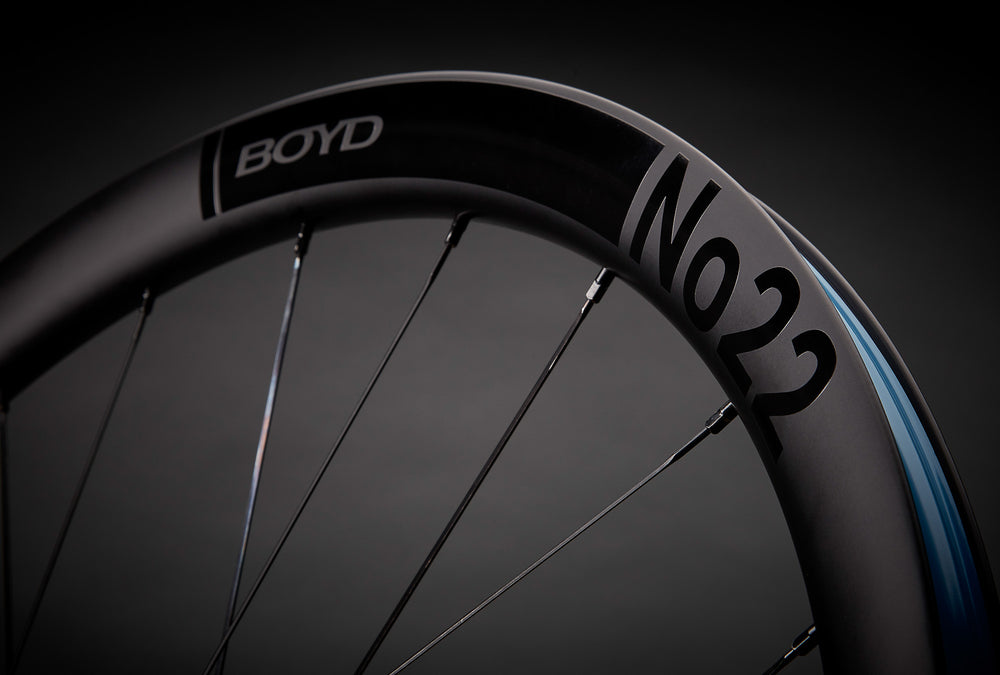Our Welding Process
Despite what you might expect, No. 22 head welder Frank Cenchitz spends a lot of time in front of an alignment plate: a huge, precision-ground aluminum tablet used to check alignment of a frame. “For each frame, I’ll go back and forth about 10 times to it, just to make sure it’s straight.”
When welding a frame, Cenchitz starts with the bottom bracket and the seat tube, before adding the dropouts and the chainstays. The frame is placed in a fixture which sets the tubes for the precise geometry of the frame, and each set of tubes are welded together followed by trips to the alignment table. Once the initial tubes are joined, “I tack up the rest of the frame,” he says, tacking all the way around the bike. Once Cenchitz is satisfied with the initial passes and alignment, finish welding is completed freehand to allow for the best access to tight, complex tube junctions.
Titanium is known for its strength, but its also an exceptionally finicky and demanding element to manipulate. “Welding titanium can be unforgiving if you don’t know what you’re doing; it’s really sticky sometimes,” Chenchitz says. And he would know, as he’s been working almost exclusively with it for his entire career.
Cenchitz has been playing music for about as long as he’s been welding, and he views working with titanium as perfectly analogous to playing an instrument. “You need a steady hand and good rhythm,” he says. “It’s tough to align, and it’s got a lot of spring to it.” Cenchitz knows titanium perhaps better than anyone else in the industry. He’s been welding it since 1997, after his high school metal shop teacher identified his talent and set up a machine for him. Cenchitz landed a summer internship at Serotta, nearby where he grew up. He’s worked on titanium ever since.
Frank was a part of the founding team at No. 22's factory, and he’s had a part in building every frame that’s ever come out of the Johnstown, N.Y. facility. “It took us four months to get that first bike up,” he remembers. Today, the team creates about a bike a day, on average. “A Little Wing takes me around a day, whereas a mountain bike takes twice as long—each one is like building a prototype,” Frank points out. The model he gets most excited about building? “The Drifter X,” he says without hesitation. “It’s a hot bike. I love all the details on it. The are just a really enjoyable build.”
The key to building a truly special bike, according to Cenchitz, is that it remains truly handmade. “We are not mass-producing frames.” At mass production, he points out, many people touch a bike. The less hands that touch it the more love, care and ownership of the finished product gets put into it. “Only five sets of hands will touch your bike,” he points out of a No. 22 build. “Everyone has a specific skill. We’re doing it the right way.”
To Frank, titanium is the ultimate material, both for a bike frame and as his partner of sorts. “We have a bond, me and titanium,” he says with a laugh. “It’s a really particular material to work with. I can’t see myself doing anything else.”












